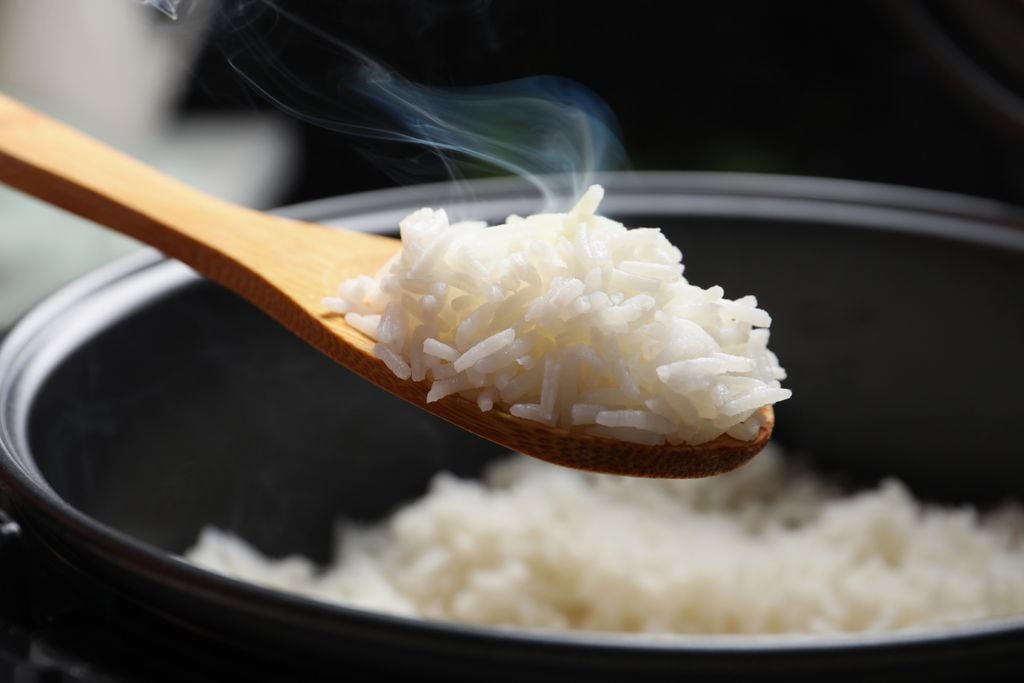The surprising effect of oil and spice on cooked rice: A new perspective on starch digestion
A recent study found that adding rapeseed oil, chili peppers, and wasabi to cooked rice changes its texture and digestion. These supplements increase resistant starch, offering potential health benefits and glycemic control.

Rice is a staple food in many cultures, but did you know that adding simple spices and oils to rice can significantly alter its properties and how it is digested?
A study recently published in Nature investigated how different dietary additions, such as rapeseed oil (AKA canola oil), dried red chilli peppers and wasabi powder, can change the texture and digestion of starch in cooked rice. These findings could have important implications for both health and the food industry.
The impact of supplements on cooked rice
The study aimed to understand how the addition of different supplements impacts the physicochemical properties and digestibility of starch in rice. The researchers used rapeseed oil, red pepper and wasabi powder as supplements.
The main finding was that the supplements affected the firmness, stickiness and digestibility of the rice. Rice cooked without any supplements was the softest, while rice with rapeseed oil had the greatest firmness.
This suggests that the oil forms a protective layer around the rice grains, altering their texture and reducing their ability to absorb water during cooking. On the other hand, the addition of chilli peppers and wasabi resulted in stickier rice with lower moisture content, which also affects its texture and digestibility.
Improved starch digestion
One of the study's most interesting findings was the increase in resistant starch (RS) content in all supplemented samples. Resistant starch is a type of starch that is not easily digested by the human body, and therefore has associated health benefits, such as improving intestinal health and controlling blood sugar levels. Rice cooked with pepper and wasabi, for example, showed a considerable increase in resistant starch content compared to rice without supplements.

This increase can be explained by interactions between the compounds present in the supplements and the starch molecules in rice. When heated, rapeseed oil, for example, interacts with starch chains, forming a physical barrier that hinders the action of digestive enzymes. Likewise, the antioxidant compounds in pepper and wasabi can influence the formation of structures that are more resistant to the digestive process.
A look under the microscope: Changes in rice structure
Another fascinating aspect of the study was the use of advanced techniques, such as scanning electron microscopy (SEM), to observe changes in the structure of the rice at a microscopic level. The rice with rapeseed oil had a smoother surface and larger clumps, indicating that the oil forms a protective layer around the rice grains. In the rice with chili and wasabi, irregular pores and layers were observed, which may explain the difference in digestion.

Furthermore, near-infrared (FTIR) spectroscopy techniques revealed that interactions between starch and supplements were mostly non-covalent, meaning that these changes are reversible and dependent on processing conditions.
Implications for health and the food industry
These findings open the door to new ways of modifying staple foods like rice to improve their texture, nutritional value, and even their impact on health.
Additionally, these ingredients can increase the fibre and antioxidant content of rice, making it more beneficial for digestive health. For the food industry, these results suggest that functional food products with additional health benefits can be developed from common foods like rice, simply by adding natural supplements during the cooking process.
This groundbreaking study showed how simple ingredients can transform the texture, nutritional value and even digestibility of cooked rice. These findings are particularly interesting for health-conscious consumers, who can benefit from a healthier and more functional diet. Adding supplements to rice is not just a matter of taste, but can also have a positive impact on health, offering new opportunities for healthy eating in everyday life.
Reference of the news:
Wang, L., Cai, Y., Prempree, P. et al. Effect of adding various supplements on physicochemical properties and starch digestibility of cooked rice. Sci Rep 14, 24606 (2024).








